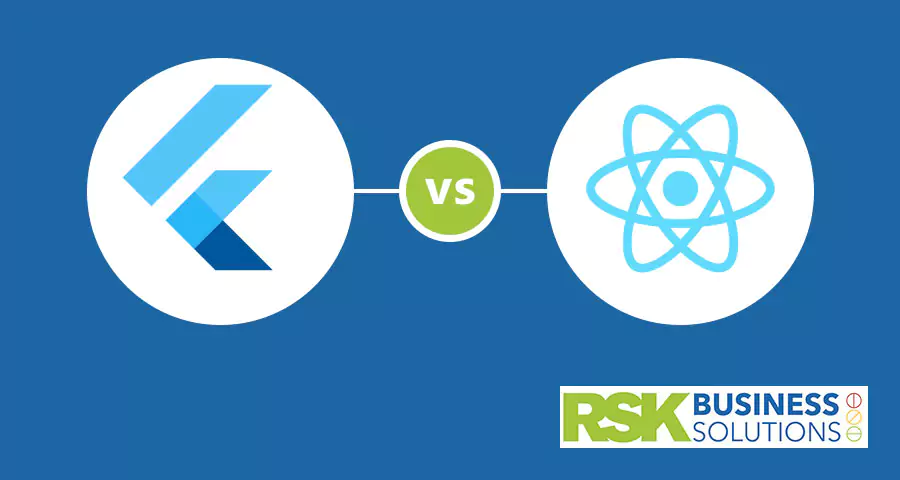
As mobile phones and apps take centre stage, cross-platform app development has become a key component. The goal for developers is to complete apps faster and make the development compatible across platforms. It is a sensible approach from the perspectives of time, cost, and development progress in general.
Related Articles

IT Outsourcing
RSK BSL Tech Team
May 4, 2025
|
|

Mobile Application Development
RSK BSL Tech Team
April 30, 2025
|
|

Software Development
RSK BSL Tech Team
April 27, 2025
|
|

Hire resources
RSK BSL Tech Team
April 24, 2025
|
|

Software Development
Praveen Joshi
April 20, 2025
|
|

Artificial Intelligence
Praveen Joshi
April 17, 2025
|
|

Pen Testing
Praveen Joshi
April 15, 2025
|
|

AI Tech Solutions
RSK BSL Tech Team
April 14, 2025
|
|

Software Development
RSK BSL Tech Team
April 9, 2025
|
|

Pen Testing
RSK BSL Tech Team
April 7, 2025
|
|

Software Development
RSK BSL Tech Team
April 3, 2025
|
|

Cloud Application
RSK BSL Tech Team
March 31, 2025
|
|

Pen Testing
Praveen Joshi
March 27, 2025
|
|

Software Development
RSK BSL Tech Team
March 25, 2025
|
|

Software Development
RSK BSL Tech Team
March 20, 2025
|
|

Software Development
RSK BSL Tech Team
March 18, 2025
|
Flutter Vs React Native Who Wins The Cross-Platform Race?
As mobile phones and apps take center stage, cross-platform app development has become a key component. The goal for developers is to complete apps faster and make the development compatible across platforms. It is a sensible approach from the perspectives of time, cost, and development progress in general.
Cross-platform app development technologies that currently rule the roost include Flutter backed by Google and React Native from Facebook. They’re both sturdy and useful tools with a robust approach towards app development.
Developers may find themselves in a fix when choosing between these tools. Let’s put them both under the lens and see how they stack up.
Programming Language, Platform, And Community
Android and iOS both have their native tools and languages to build apps. However, since our concern at the moment is cross-platform software development, technologies like React Native and Flutter take the focus.
React Native
React Native is an open-source technology backed by Facebook. It runs on JavaScript and can be easily used with other popular JS frameworks and libraries.
The approach made it an excellent choice for agile web & Software developers. They can add little training with their existing skill set to develop fast and cost-efficient apps. The existence of a mature and vast community is a big plus. Active communities like those on StackOverflow, Github, and countless other websites are a huge asset.
Flutter
Backed by Google, Flutter is an open-source technology. It has been built using Google’s Dart programming language. The use of Dart can initially come across as a barrier, considering the word is rarely employed in other applications.
However, Dart is easy to learn. Developers with experience with Java and JavaScript find the change rather easy. The supposed barrier of entry is considerably reduced, thanks to the comprehensive documentation available. Dart, and by extension, Flutter, support most object-oriented concepts that programmers and developers appreciate.
Flutter has an increasingly growing community. There is a keen community on Github, but the presence on StackOverflow and other websites is relatively smaller than React.
It is worth noting that Flutter was first made available as a beta release in February 2018. Similarly, React Native was released in January 2015 as a preview release. It saw an official launch in March 2018 at the F8 conference.
Installation And Setup
React Native
React Native is installed as part of the Node Package Manager (NPM). The process is simple and straightforward for JavaScript developers and those who have worked with React.js and Node.js before. Those who are new to JavaScript may need to spend some additional time understanding the installer.
NPM can install packages locally and globally. macOS users will need a package manager like HomeBrew to install React Native. Setup is straightforward and assumes the developer has all the tools ready for development.
Flutter
Flutter installation proceeds after downloading a binary from Github. The downloaded binary has to be platform-specific. As of now, Flutter doesn’t provide support to package managers like HomeBrew.
Setup is more straightforward with Flutter and provides detailed documentation and guidance through various steps. The CLI during installation and setup uses the “flutter doctor” tool. This tool guides developers through the setup and also checks for devices that may need configuration.
Development Time And Stability
Flutter and React Native are both relatively stable and offer efficient development. Since the core offering of both these technologies is cross-platform software development speed, they both perform admirably.
React Native has ready to use components for cross-platform use. They speed up app development significantly. The ability to use other frameworks creates a platform where the time required for development considerably reduces. Flutter too claims rapid app development; however, it is outshined by React Native where available development resources are concerned.
The lack of frameworks for Flutter can be seen as a result of the technology being younger than React Native. The other aspect is that Flutter works on Dart, which is less popular than JavaScript. Flutter may soon catch up to React Native in terms of available components.
Another factor affecting speed is the hot reload feature. It allows developers to test changes made in the UI quickly. Both technologies support hot reload for faster development.
Flutter and React Native also performs well on stability. The earlier use of Flutter was a bit bumpy, but that was mainly due to being released as a beta version. Flutter has matured since then and is very much in line with the best, where stability is concerned.
DevOps And CI/CD
Continuous Integration and Continuous Development are a core requirement for modern Android & iOS app development. Both technologies work seamlessly with CI and CD. Flutter can appear more comfortable to use because of the extensive documentation available to deal with CI/CD and DevOps. Its rich command interface makes the process seem a lot more intuitive.
React Native doesn’t have much by way of official documentation for setting up CI/CD. Developers can benefit from the mature and large community to React Native in this aspect. There are several articles and user content available to help with CI/CD for React Native. However, this factor is also genuine for Flutter, which gets additional benefits from the documentation available.
Specifics For Flutter And React Native
React Native
As a mature platform, React Native does very well to exploit its advantage. Several large companies and applications already use the technology. Additionally, its access to frameworks and libraries is tough to beat.
It works wonderfully with small-sized apps and gracefully handles larger apps as well. A significant advantage for cross-platform use here is that the code can be easily used for desktop, web, and mobile app development.
Flutter
Flutter’s better handling of object-oriented programming allows it to handle complex tasks relatively better. Its excellent documentation can go hand-in-hand with the community to help developers working with Flutter.
Praveen Joshi
Praveen is a seasoned IT Solutions Leader and Director at RSK Business Solutions, a technology-driven IT Consulting Company that specializes in Bespoke Software Development, Agile Consulting, Mobile App Development, Smart Sourcing, and much more. For the last 17 years, he has been delivering quality custom IT solutions that help businesses achieve their goals.

 Share
Share Post
Post Tweet
Tweet Copy
Copy


